 |
 |
 |
| |
Resmetirom Resolves NASH and Lessens Fibrosis in 52-Week Placebo Trial
|
| |
| |
EASL Congress 2023, June 21-24, Vienna
Data from the 52-week first 1,000 patient portion of MAESTRO-NASH, together with data from MAESTRO-NAFLD-1, MAESTRO-NAFLD-OLE, Phase 2 and Phase 1 data, including safety parameters, will form the basis of the subpart H submission to FDA for accelerated approval of resmetirom for treatment of NASH.
Mark Mascolini
In a 52-week phase 3 trial, significantly higher proportions of people with nonalcoholic steatohepatitis (NASH) had NASH resolution and 1 or more fibrosis stage improvements with the thyroid hormone receptor-β agonist resmetirom than with placebo [1]. Low-density lipoprotein (LDL) cholesterol fell significantly more with 80 or 100 mg of resmetirom than with placebo in this 966-person trial.
A selective thyroid hormone receptor-β agonist, resmetirom could improve NASH by bolstering liver fat metabolism and easing the lipotoxicity seen with NASH. Because resmetirom acts specifically on thyroid hormones, it could avoid the negative impacts of surplus thyroid hormone on the heart and bone. In an earlier 36-week placebo-controlled phase 2 trial, resmetirom resolved NASH in a significantly higher proportion of participants than did placebo, while lowering liver enzymes, markers of inflammation, and fibrosis [2].
MAESTRO-NASH is a double-blind placebo-controlled phase 3 trial that uses successive liver biopsies to explore the impact of resmetirom on liver health and related outcomes in people with biopsy-confirmed NASH [1,3]. Participants had to have 3 or more metabolic risk factors, biopsy-confirmed NASH, a nonalcoholic fatty liver disease (NAFLD) activity score at or above 4, fibrosis stage F1B, F2, or F3, and 8% or more liver fat on an MRI-PDFF.
Researchers randomized 322 people to 80 mg of resmetirom daily, 323 to 100 mg daily, and 321 to placebo. Age averaged about 57 years across the three groups, and about 44% in each group were men. About two thirds in each study arm had type 2 diabetes, about 60% had stage 3 fibrosis, almost half were taking a statin, and about 15% took a GLP-1 receptor agonist for diabetes or obesity.
Participants had liver biopsies before study treatment began and at week 52. An intention-to-treat analysis including all participants with a baseline biopsy showing an appropriate fibrosis stage determined that at 52 weeks NASH resolved (with no worsening fibrosis) in 10% of people randomized to placebo, 26% randomized to 80 mg of resmetirom daily (P < 0.0001 vs placebo), and 36% randomized to 100 mg of resmetirom daily (P < 0.0001 vs placebo). Proportions with an improvement of 1 or more fibrosis stages (with no worsening in NAFLD activity score) were 14% with placebo, 24% with 80 mg of resmetirom (P = 0.0002), and 26% with 100 mg of resmetirom (P < 0.0001).
At 52 weeks LDL cholesterol did not change in the placebo group, while dropping 14% in the 80-mg resmetirom group (P < 0.0001) and 16% in the 100-mg resmetirom group (P < 0.0001).
A sensitivity analysis involved a consensus read of digitized images when individual pathologists' scores disagreed about either of the two primary endpoints (NASH resolution and at least 1 stage improvement in fibrosis). In this analysis 8% in the placebo group had NASH resolution with at least a 2-point reduction in NAFLD activity score and no worsening fibrosis, compared with 24% in the 80-mg resmetirom group and 28% in the 100-mg group (P < 0.0001 for both resmetirom comparisons with placebo). While 12% randomized to placebo had at least 1-stage improvement in fibrosis with no worsening NAFLD activity score, proportions achieving those goals were 24% with 80 mg of resmetirom and 26% with 100 mg (P < 0.0001 for both comparisons).
Either dose of resmetirom also did significantly better than placebo in an array of secondary biopsy endpoints, such as at least a 2-point NAFLD activity score drop with at least a 1 point decline in ballooning or inflammation and no worsening of fibrosis, and NASH resolution with at least a 2-point NAFLD activity score decline and no worsening fibrosis in observed data including both baseline and week-52 biopsies.
In each of 20 subgroups (based on sex, dose, fibrosis stage, type 2 diabetes, age, and NAFLD activity score), NASH resolution proved significantly more likely-by about 10% to 30%--with resmetirom than with placebo. For 18 of these 20 subgroups, fibrosis improvement was also significantly more likely with resmetirom than with placebo. Fibrosis improvement also proved more likely with resmetirom than with placebo in 2 other subgroups, but not significantly so (no diabetes, 80 mg; age 65 or older, 100 mg).
Besides lowering LDL cholesterol significantly more than placebo, either dose of resmetirom also outdid placebo at weeks 24 and 52 in improving apolipoprotein B, triglycerides, lipoprotein (a), apolipoprotein C3, and non-high-density lipoprotein cholesterol. People taking either dose of resmetirom significantly lowered levels of the liver enzymes ALT, AST, and GGT, as well as sex hormone binding globulin, compared with placebo when figured either as percentage change or absolute reduction.
Proportions of trial participants with 1 or more serious treatment-emergent adverse events were 11.8% with 80 mg of resmetirom, 12.7% with 100 mg, and 12.1% with placebo. Only 2 people taking 80 mg of resmetirom and none taking 100 mg had 1 or more drug-related serious treatment-emergent adverse event. Six people (1.9%) in the 80-mg group, 22 (6.8%) in the 100-mg group, and 8 (2.5%) in the placebo group had a treatment-emergent adverse event leading a participant to stop treatment. Study dropouts were more frequent with 100 mg of resmetirom than with placebo in the first 12 weeks and similar in frequency across the three study arms from week 12 to week 52. Most adverse events responsible for stopping 100 mg of resmetirom were gastrointestinal (overall for 100 mg: diarrhea in 33.7%, nausea in 19.2%, vomiting in 10.8%). There were no drug-induced liver injuries.
On the basis of these results, MAESTRO-NASH researchers noted that resmetirom is the first medication "to achieve meaningful effects on both primary liver biopsy endpoints [NASH resolution and 1 or more fibrosis stage improvements] that are reasonably likely to predict clinical benefit in a phase 3 trial." They added that MAESTRO results do not yet include clinical outcomes, but they expect clinical data to accumulate as follow-up continues for 54 months.
References
1. Harrison S, Bedossa P, Guy C, et al. Primary results from MAESTRO-NASH a pivotal phase 3 52-week serial liver biopsy study in 966 patients with NASH and fibrosis. EASL Congress 2023, June 21-24, Vienna. Abstract GS-001.
2. Harrison S, Bashir MR, Guy C, et al. Resmetirom (MGL-3196) for the treatment of non-alcoholic steatohepatitis: a multicentre, randomised, double-blind, placebo-controlled, phase 2 trial. Lancet. 2019;394:2012-2024. doi: 10.1016/S0140-6736(19)32517-6. https://pubmed.ncbi.nlm.nih.gov/31727409/#full-view-affiliation-2
3. ClinicalTrials.gov. A phase 3 study to evaluate the efficacy and safety of MGL-3196 (Resmetirom) in patients with NASH and fibrosis (MAESTRO-NASH). ClinicalTrials.gov identifier NCT03900429. https://clinicaltrials.gov/study/NCT03900429
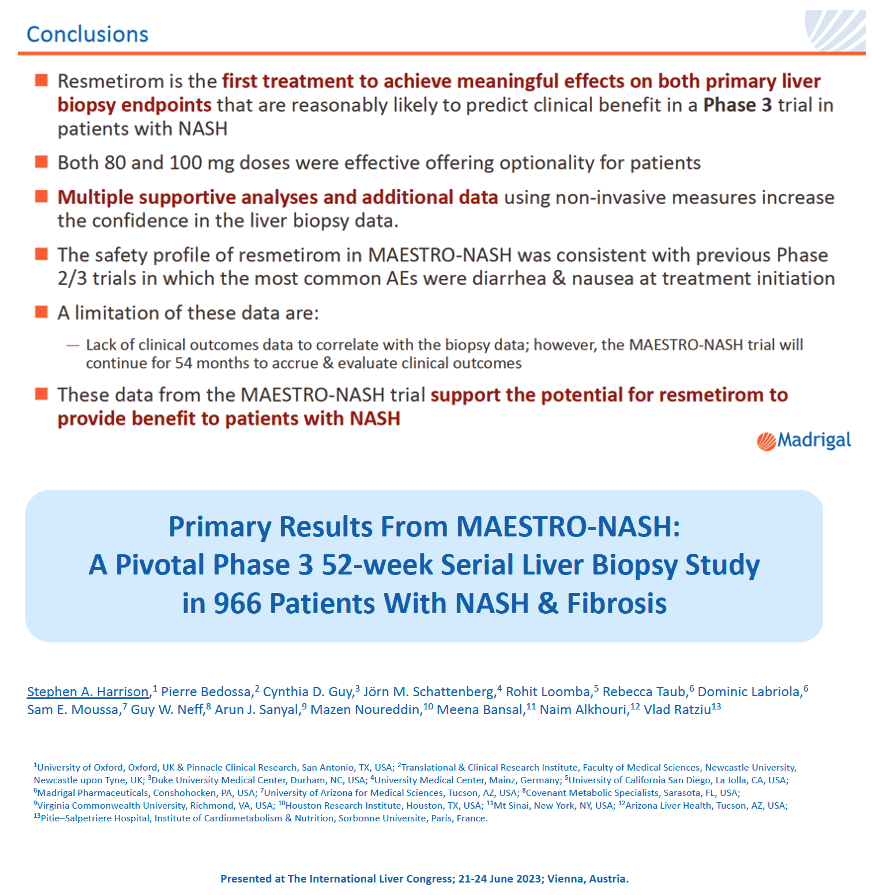
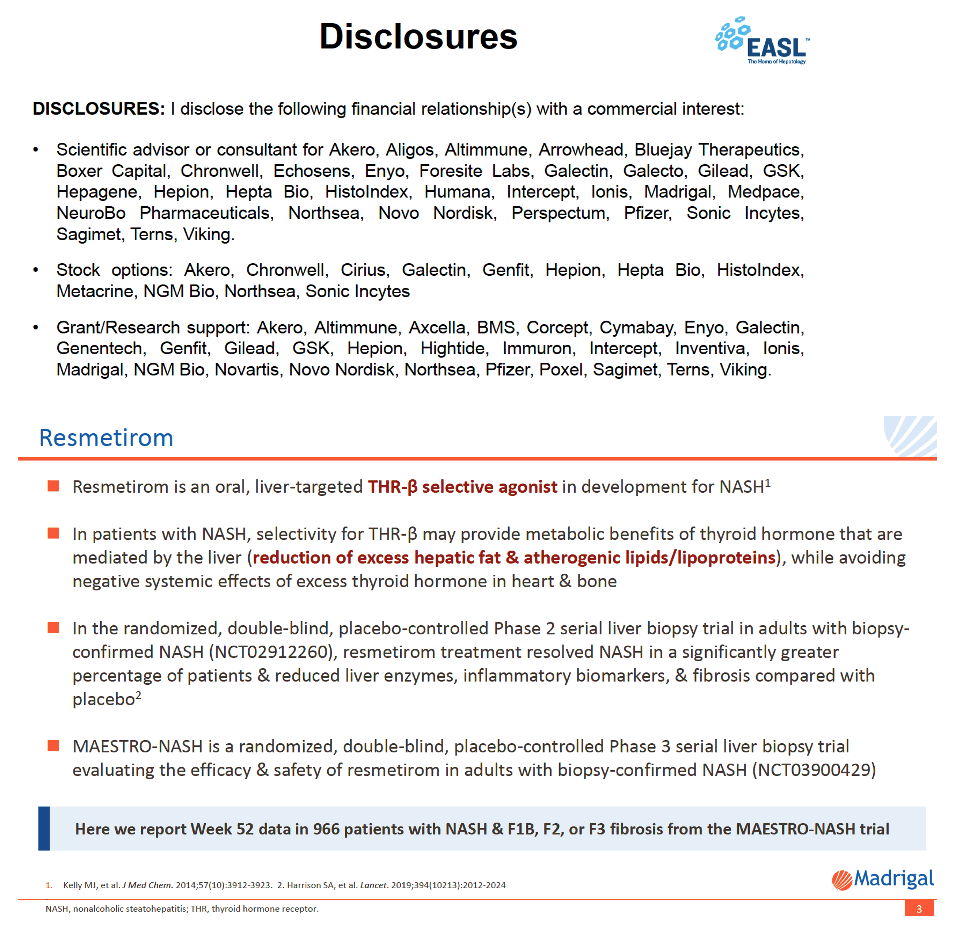

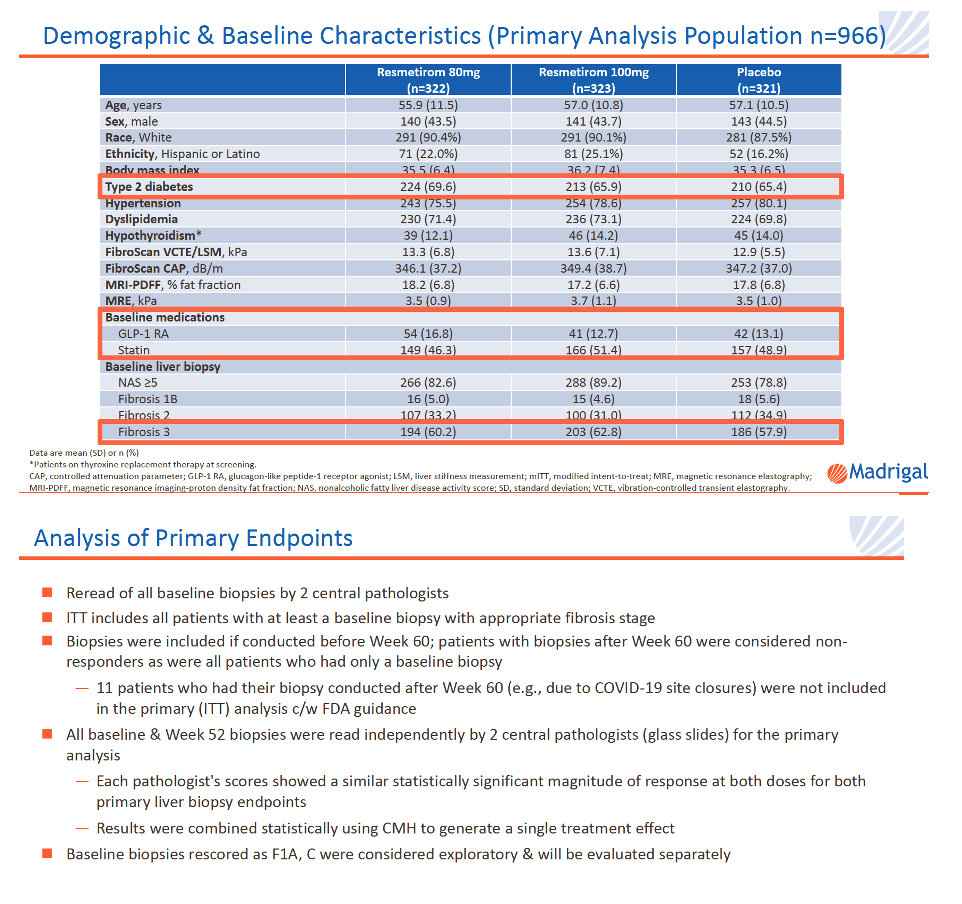
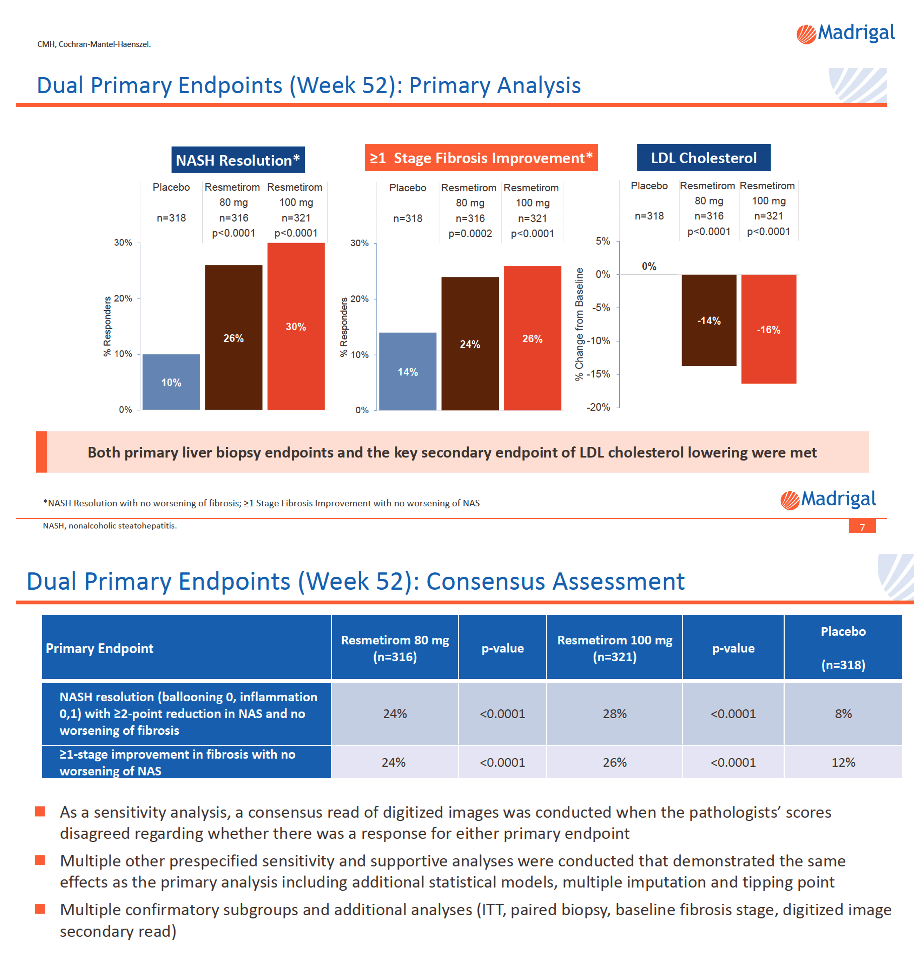
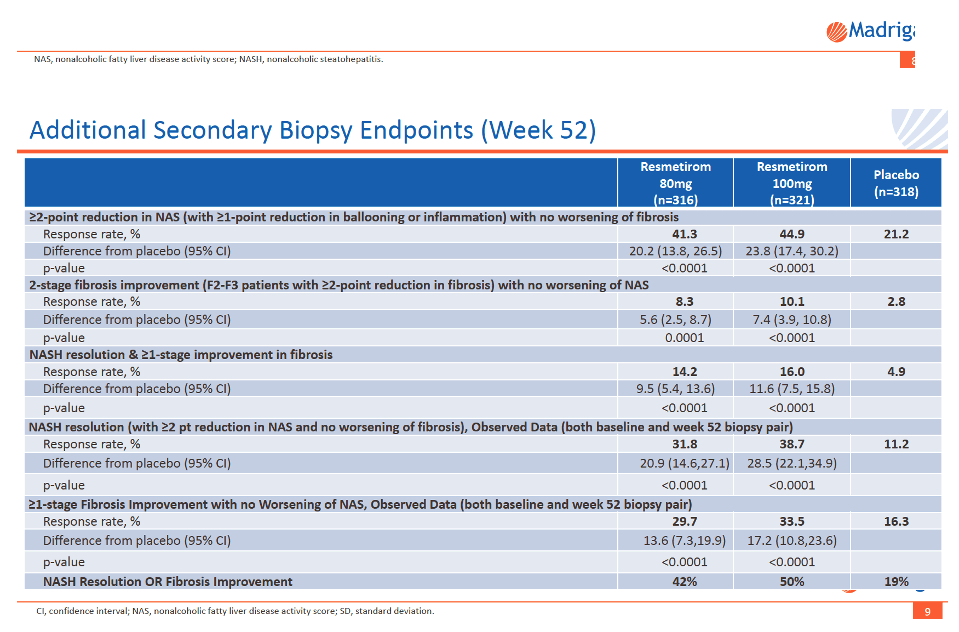
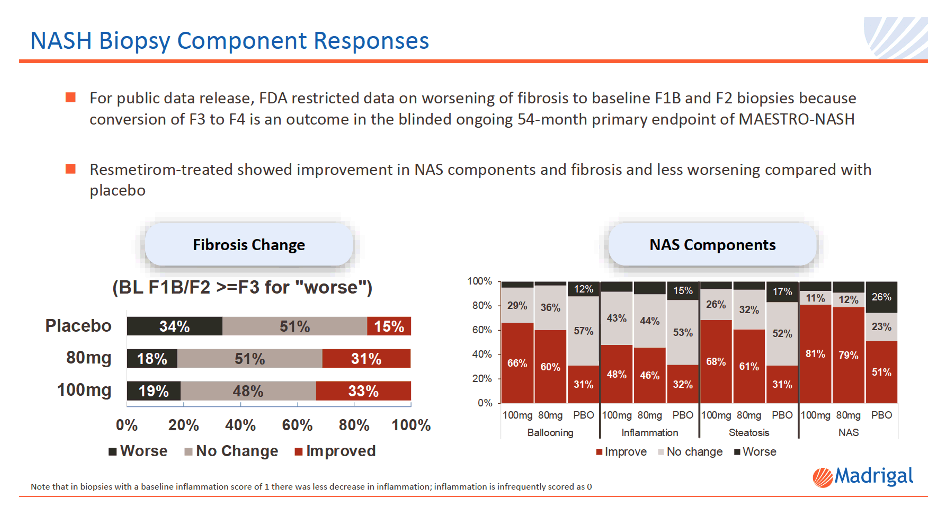
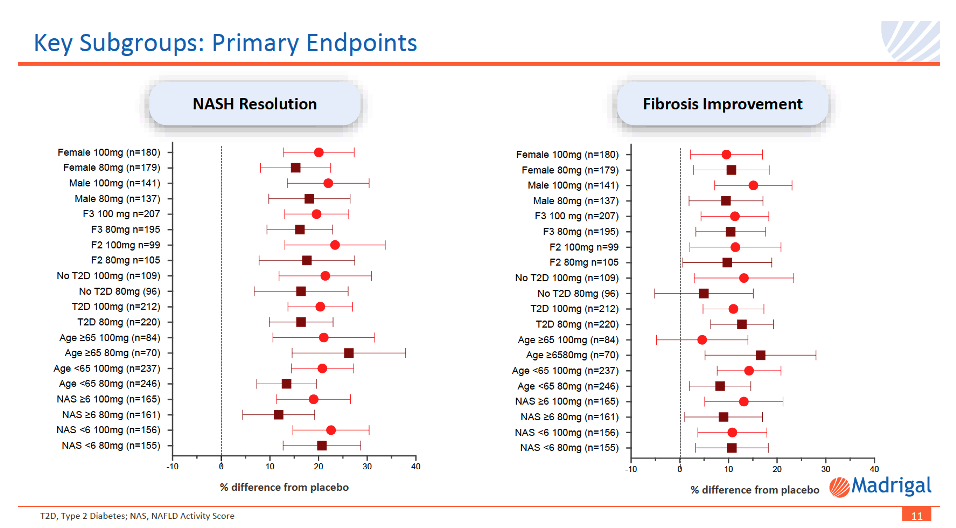
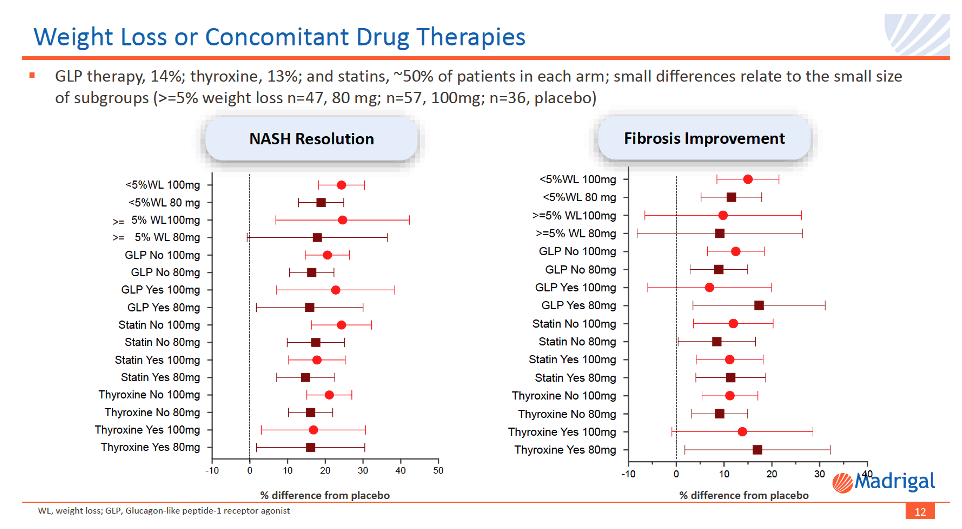
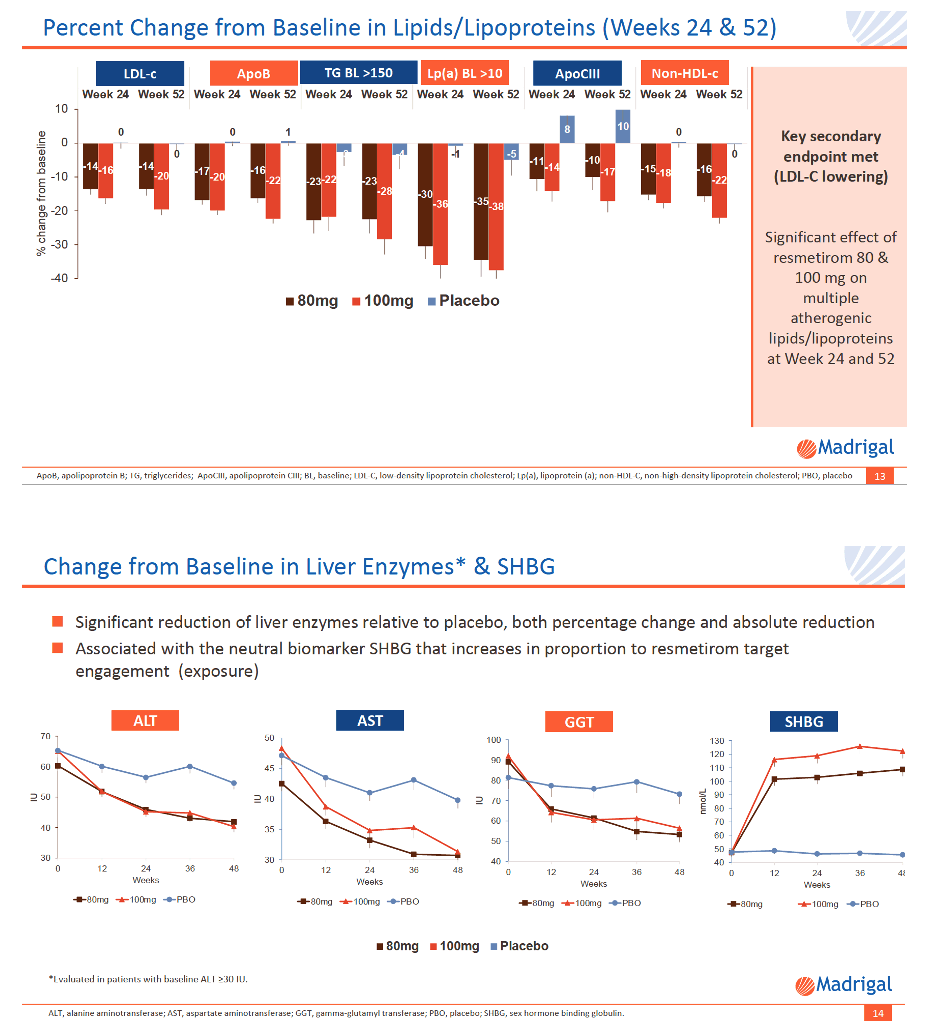
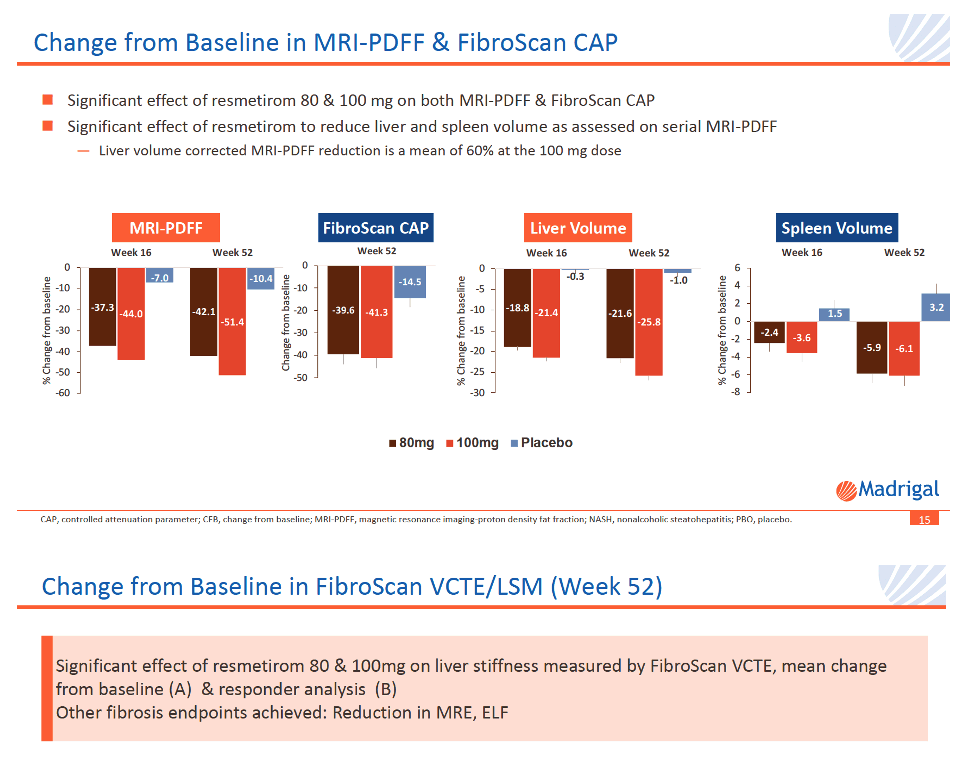
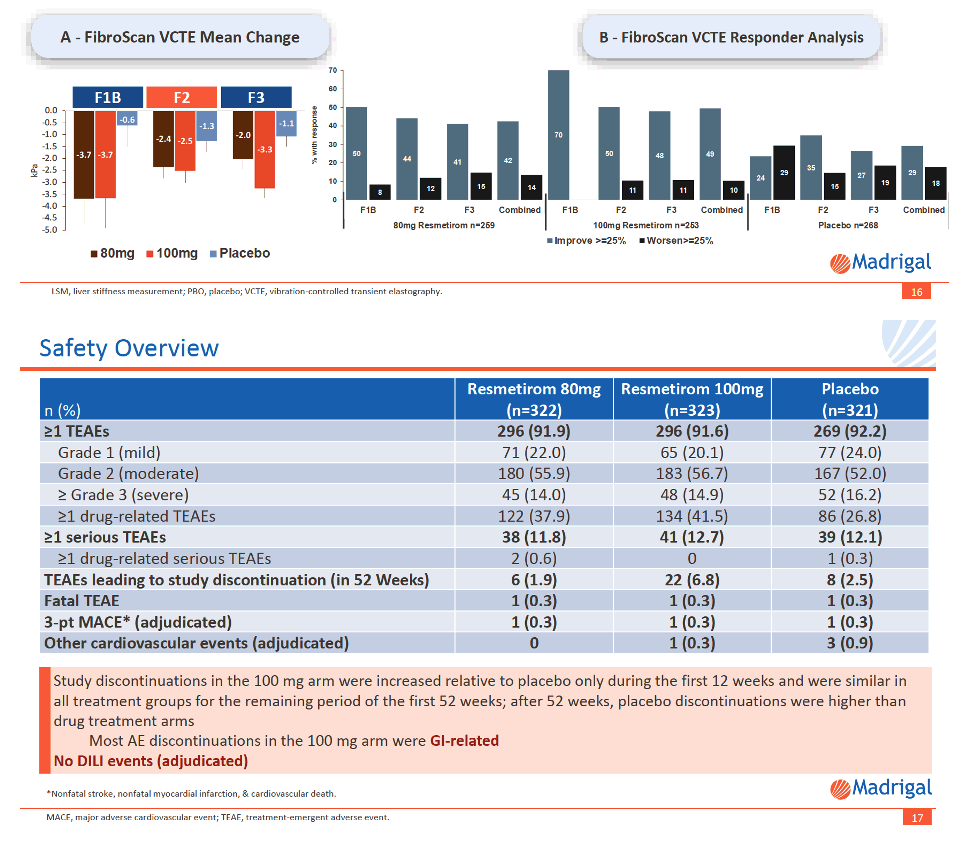
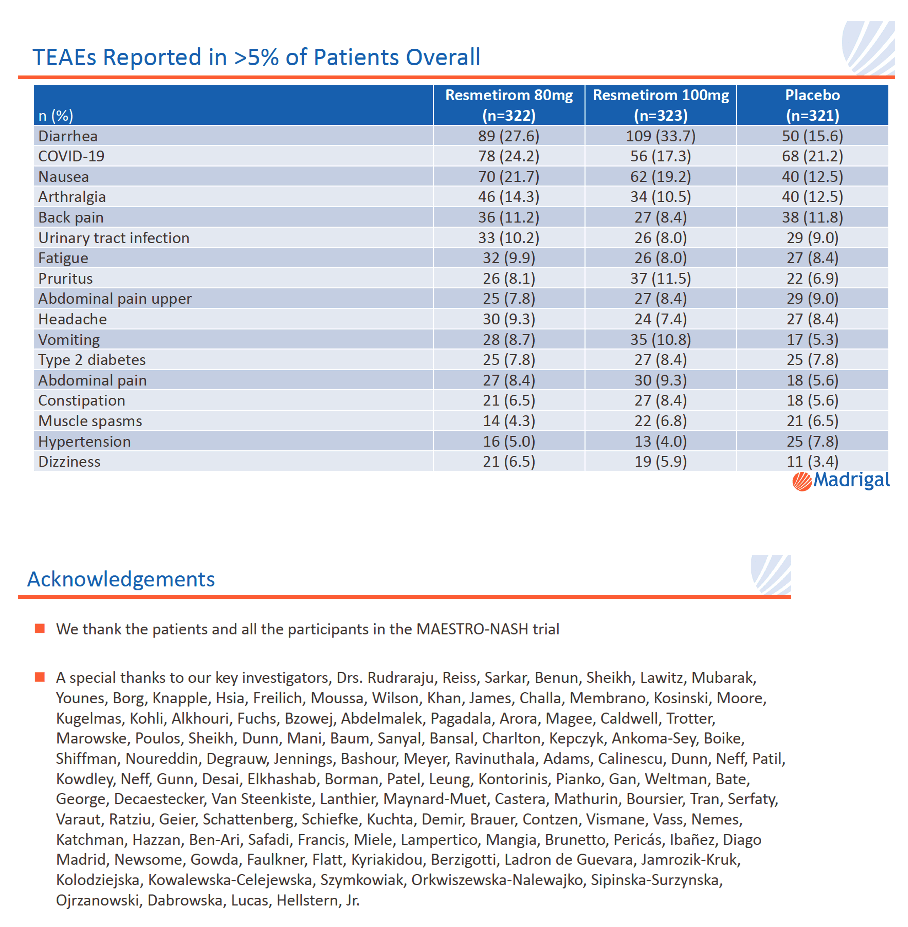
|
| |
|
 |
 |
|
|